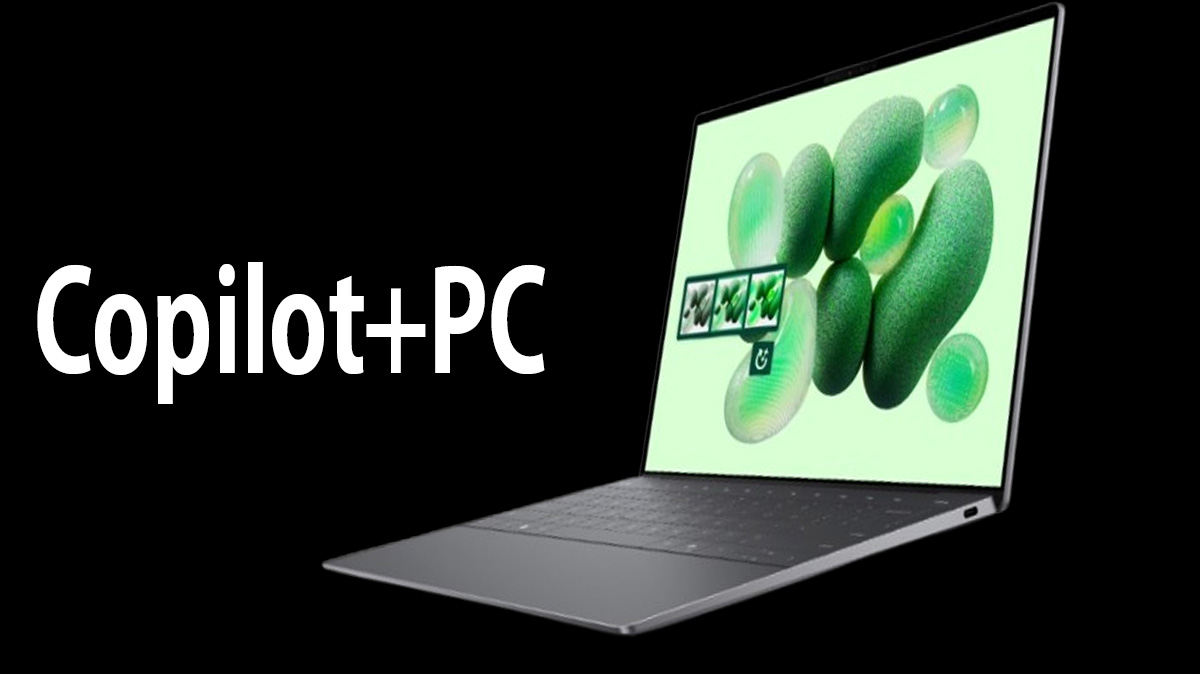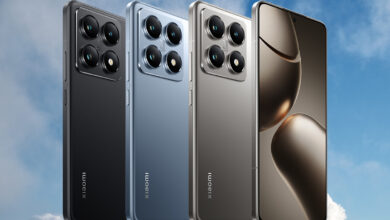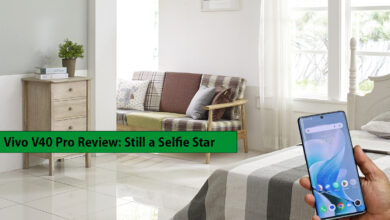Dell XPS 13 (9345) Review and Technical Specifications

The Dell XPS 13 (9345) has made waves as an ultraportable laptop. With its sleek design and lightweight build, it promises a lot. But does it deliver? Let’s dive into the details.
Dell XPS 13: A New Era with Snapdragon X Elite
The latest Dell XPS 13 is making waves in the tech world. With its Snapdragon X Elite chipset, this laptop promises impressive performance and all-day battery life. Whether you’re working from a café or on the go, this device ensures you won’t be tethered to an outlet.
Power Meets Portability
One of the standout features of this model is its power efficiency. The Snapdragon chipset delivers robust performance without draining your battery. This means you can tackle demanding tasks without worrying about running out of juice halfway through your workday.
AI-Powered Copilot Features
Windows’ AI-powered Copilot features are fully integrated into this device. These tools enhance productivity by providing smart suggestions and automating repetitive tasks. Imagine having a digital assistant that streamlines your workflow—this laptop makes that a reality.
Cost-Effective Choice
Priced at £1249, the Dell XPS 13 remains firmly in premium territory. However, opting for Qualcomm internals translates to a saving of around £100 compared to Intel alternatives. This makes it an attractive option for those looking for high performance without breaking the bank.
Limitations of Windows on ARM
Despite its advantages, there are some limitations with Windows on ARM hardware. Compatibility issues may arise with certain applications that are optimized for x86 architecture. While many popular programs run smoothly, it’s essential to check if your must-have software is supported.
Controversial Design Changes
Dell has made some controversial changes to the familiar XPS design formula. Some users may find these adjustments less appealing than previous models. It’s worth considering whether these changes impact your overall experience with the device.
Dell XPS 13: A Minimalist Marvel
Dell has truly embraced minimalist design with the latest XPS 13. This laptop stands out with its sleek unibody chassis, rivaling even the latest MacBook Air. The subtle branding adds to its elegance, making it a premium choice for professionals and creatives alike.
Premium Feel
Among the Copilot+ laptops I’ve tested, this one exudes the most luxurious vibe. Available in Graphite and Platinum, both colors are crafted from lightweight aluminum. The build quality is impressive—rigid and sturdy with minimal flex. You can feel the durability in every touch.
Impressive Portability
Weighing just 1.19kg and measuring slightly over 15mm at its thickest point, this laptop is incredibly portable. I took it on a week-long work trip without a second thought. Surprisingly, my digital camera and lens weighed more! It slipped easily into my travel bag, making it an ideal companion for on-the-go professionals.
Connectivity Considerations
However, this sleek design comes with trade-offs in connectivity. You’ll find only two USB4 Type-C ports—one on each side. If you’re charging your device, you’re left with just one free port for peripherals. It’s a minimalist approach that prioritizes form over function.
Unique Keyboard Experience
Opening up the XPS 13 reveals a unique keyboard layout. Function buttons have been replaced by capacitive shortcuts, offering a modern twist. The remaining keys are flat and tightly packed together, leaving little room between them—definitely not for those who prefer spacious keyboards.
The touchpad? It’s almost invisible! And while some may miss up-firing speakers like those found on larger models such as the XPS 14, this design choice contributes to its sleek profile.
Enhanced Security Features
The power button doubles as a fingerprint sensor for quick access. Plus, the 1080p webcam supports Windows Hello facial recognition. Both features work swiftly; however, bright backlighting can sometimes confuse facial detection. Fortunately, I rarely needed to enter my PIN or password after setting these up.
Dell XPS 13: A Vibrant Display with Room for Improvement
When it comes to laptops, the display is often a dealbreaker. Dell’s XPS 13 stands out with its vibrant options, but not without some caveats. While other brands offer OLED screens, Dell charges a premium for this luxury. The entry-level model features a Full HD+ LCD, and there’s an upgraded QHD touch panel available. However, at this price point, you might expect more.
Design and Display
The XPS 13 boasts impressively slim bezels on all sides. This sleek design enhances the viewing experience while minimizing distractions. An anti-glare coating significantly reduces reflections, making it easier to see even in bright environments. With peak brightness exceeding 500 nits, you won’t struggle to read your screen—unless you’re sitting directly under the midday sun.
The variable refresh rate of 30-120Hz adds fluidity to motion and scrolling. It’s perfect for those who enjoy smooth visuals while browsing or watching videos.
Color Accuracy and Contrast
While the display shines in brightness and design, color accuracy leaves something to be desired. Its Adobe sRGB coverage is decent but not exceptional. If you’re into color-sensitive work—like graphic design—you might want to consider alternatives.
That said, contrast levels are impressive for an LCD panel. Stills and videos pop with vibrancy that will satisfy casual users and entertainment seekers alike. However, if you’ve experienced the optional OLED screen on the larger XPS 14 model, you’ll likely find yourself wanting that upgrade on this laptop as well.
Audio Performance
Audio performance is another area where the XPS 13 shows mixed results. Unlike its bigger sibling equipped with upfiring speakers, this model has side- and down-firing speakers. With just a modest output of 2W from full-range drivers and tweeters, sound quality is adequate but lacks depth.
The audio can get loud enough for casual listening; however, it tends to sound hollow at higher volumes. If top-notch audio is essential for your workflow or leisure time, Apple continues to set the standard in laptop sound quality.
Conclusion
In summary, the Dell XPS 13 offers a stunning display that excels in brightness and design but falls short in color accuracy compared to competitors offering OLED screens at similar price points. While its audio performance meets basic needs, it doesn’t quite match up against industry leaders like Apple.
If you’re looking for a stylish laptop with great visuals for everyday tasks—this could be your choice—but keep in mind its limitations before making that investment.
Dell XPS 13: A Keyboard Experience Revisited
The Dell XPS series has long been celebrated for its exceptional keyboard comfort. However, recent iterations, particularly the latest XPS 13, have sparked mixed feelings among users. Let’s dive into what’s changed and why it matters.
Key Layout Confusion
One of the most noticeable shifts is in the key layout. The tightly-grouped keys from the controversial XPS 13 Plus have returned, but with a twist. Some keys are oddly proportioned, leading to frequent mis-hits. For instance, the Caps Lock key is almost twice as wide as expected. This design choice can be frustrating for users who find themselves accidentally activating Caps Lock mid-typing.
Additionally, the oversized Tab key feels unnecessary and can disrupt typing flow. The half-height up and down arrow keys also pose challenges; they’re less intuitive and can lead to mistakes during navigation.
Capacitive Keys: A Double-Edged Sword
The transition to capacitive function keys adds a layer of elegance but at a cost. Escape and Delete keys have been relocated to this sleek row, which lacks tactile feedback. Users often find themselves looking away from their screens just to confirm they’ve pressed the right key. This distraction can interrupt workflow and reduce efficiency.
While the backlit feature is visually appealing, it falls short in practical use—especially in brighter conditions where visibility diminishes against white keys.
Key Travel and Touchpad Issues
On a positive note, key travel remains decent with a satisfying springy action under each press. However, adjusting to the flat keys took longer than anticipated compared to previous models like the XPS 14. This could deter users who prefer more pronounced key profiles.
Another significant concern arises with the touchpad functionality. Users reported instances where it mistakenly registered clicks or drags while simply trying to tap—a frustrating experience when working on-the-go. While this issue didn’t occur on flat surfaces, it raises questions about usability in everyday scenarios.
Muscle Memory vs Design Flaws
Identifying where the touchpad begins and ends isn’t as critical thanks to muscle memory; most users adapt quickly enough not to miss taps or swipes. Still, stronger haptic feedback would enhance user confidence during interactions.
Conclusion: Room for Improvement
In summary, while Dell’s XPS 13 retains some beloved features from its predecessors, it struggles with its keyboard layout and touchpad functionality in this latest iteration. Users seeking an efficient typing experience may want to weigh these factors carefully before making a decision.
As Dell continues to innovate within this iconic line of laptops, we hope they listen closely to user feedback—because comfort should always be at the forefront of design.
Unleashing Power: The Snapdragon X Elite Chipset in Copilot+ PCs
When it comes to performance, the 12-core Snapdragon X Elite chipset paired with 16GB of RAM is a game-changer. This configuration became the go-to choice for many Copilot+ PCs at launch. But Qualcomm didn’t stop there; they also introduced 10- and 8-core variants. Still, the X1E-80-100 stands out as the sweet spot.
Balancing Performance and Price
While not as powerful as top-tier chips boasting faster integrated graphics and higher clock speeds, the X1E-80-100 offers a compelling balance. It delivers impressive performance without breaking the bank. In desktop tasks and 2D benchmarks, it competes closely with Intel’s Core Ultra 7 and AMD’s Ryzen 9 7000 series.
The competition is tight. Some tests favor one chip, while others give the edge to another. However, no single processor dominates across all metrics. This results in smooth operation in Windows, where apps open quickly and batch-processing tasks—like those in Photoshop—run seamlessly.
Ideal for Everyday Tasks
For everyday use, such as web browsing or word processing, the Dell XPS 13 shines brightly with this chipset. It handles typical workloads effortlessly. If your needs are more demanding—think heavy multitasking or advanced creative work—you might consider upgrading to 32GB of RAM. While it’s not essential for basic tasks, it can make a difference for power users.
Why the Snapdragon X Elite Laptop May Not Be Your Best Gaming Choice
If gaming is your go-to way to unwind, the Snapdragon X Elite laptop might not be the right fit. While it has some intriguing features, its performance lags behind competitors like the Dell XPS 14.
Limited Game Support
First off, support for games on the Snapdragon X Elite is limited. Many popular titles simply don’t run well. In contrast, laptops with Intel or AMD chips handle games like Hades smoothly. They can even tackle more demanding titles if you adjust the settings. The XPS 13 struggles in this area, leading to frustrating frame rate drops.
Underwhelming AI Features
Windows hasn’t fully embraced the potential of the Snapdragon’s NPU (Neural Processing Unit). Sure, it can blur backgrounds during video calls or generate images in MS Paint. But these are just neat tricks—nothing groundbreaking that you’ll use daily. Features like Copilot and Windows Recall still feel more like promises than realities.
Battery Life: A Silver Lining
On a brighter note, battery life is commendable. You can easily get through a full workday without plugging in. However, if you’re editing images extensively, you might find yourself cutting it close by quitting time. In synthetic tests, the XPS 13 managed about 13 hours of video playback. But remember, its 55Whr battery isn’t the largest among ultraportables.
Conclusion: Choose Wisely
In summary, if gaming is a priority for you, consider alternatives to the Snapdragon X Elite laptop. While it shines in battery life and offers some fun AI features, its gaming performance and app support leave much to be desired. For serious gamers or those who enjoy demanding applications, investing in a device with dedicated graphics will likely provide a far better experience.
Sticking a Snapdragon CPU Inside the XPS 13: A Smart Move for Dell
Dell’s XPS 13 has long been a favorite among tech enthusiasts. With its sleek design and premium feel, it’s hard to resist. Now, with the addition of Qualcomm’s Snapdragon CPU, this laptop becomes even more appealing.
Portability Meets Efficiency
The XPS 13 is wonderfully portable. It’s lightweight and easy to carry around, making it perfect for on-the-go professionals. The Snapdragon chip enhances battery life significantly compared to the Intel version. Imagine working all day without scrambling for a charger!
Performance That Delivers
You might wonder about performance. Rest assured, the Snapdragon offers solid desktop capabilities. It handles office tasks and simpler creative projects with ease. As Windows on ARM continues to improve, you’ll find that performance is nearly on par with traditional setups.
Cost-Effective Choice
Another bonus? The Snapdragon-powered XPS 13 comes at a slightly lower price point. For budget-conscious buyers, this is a win-win situation.
Some Lingering Issues
However, not everything has changed for the better. The capacitive shortcuts remain more flashy than functional. They look great but can be frustrating in practice.
The keyboard layout also requires some adjustment. If you’re used to standard layouts, expect a learning curve.
Then there’s the touchpad issue I encountered during testing. It was particularly troublesome—though it’s worth noting that this could have been an isolated problem with my review unit.
Alternatives Worth Considering
If I were in the market for a Copilot+ laptop today, I’d likely lean towards Microsoft’s Surface Pro or Surface Laptop first. They offer their own unique advantages that may suit your needs better.
Conclusion
In summary, sticking a Snapdragon CPU inside the XPS 13 makes sense for many users. With enhanced portability and battery life, it stands out in today’s market. Just keep in mind some of its quirks before making your decision!
Dell XPS 13 (9345) Technical Specifications
The Dell XPS 13 (9345) is a powerful laptop designed for both productivity and portability. Here’s a closer look at its impressive technical specifications.
Display
- Screen Size: 13.4 inches
- Resolution: 1920 x 1200 pixels
- Type: LCD
The vibrant display offers sharp visuals, making it perfect for work and entertainment.
Processor
- Model: Snapdragon X Elite X1E-80-100
This advanced processor ensures smooth performance, whether you’re multitasking or running demanding applications.
Memory
- RAM: 16GB
With ample memory, the XPS 13 can handle multiple applications seamlessly.
Graphics
- Graphics Card: Adreno (integrated)
While integrated graphics may not be suited for high-end gaming, they provide sufficient power for everyday tasks and media consumption.
Storage
- Type: SSD
- Capacity: 512GB
The fast SSD storage allows quick boot times and rapid access to files, enhancing overall efficiency.
Operating System
- OS: Windows 11 Home
Experience the latest features and security updates with Windows 11, tailored for modern users.
Connectivity
- Ports: 2x USB-C
Stay connected with versatile USB-C ports that support data transfer and charging.
Battery Life
- Capacity: 55Wh
Enjoy long-lasting battery life, allowing you to work or play without frequent recharges.
Dimensions & Weight
- Size: 255 x 199 x 15.3 mm
- Weight: 1.19 kg
Lightweight and compact, the Dell XPS 13 is easy to carry around, making it ideal for on-the-go professionals.
Conclusion
The Dell XPS 13 (9345) combines cutting-edge technology with sleek design. Its robust specifications make it suitable for various tasks—from office work to streaming your favorite shows. If you’re in the market for a reliable laptop that doesn’t compromise on performance or style, the Dell XPS 13 is worth considering.






